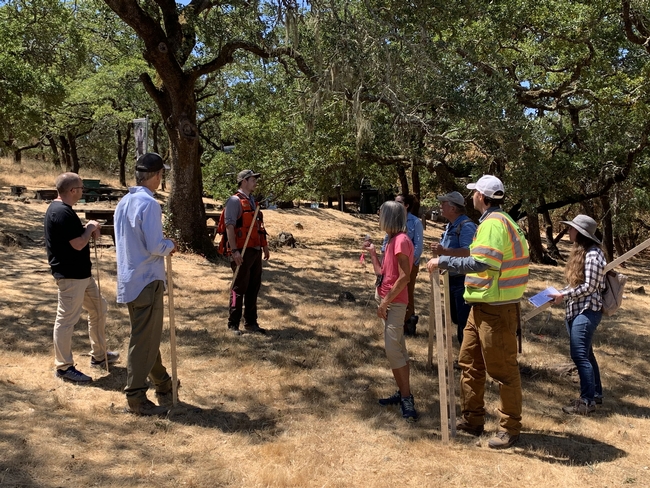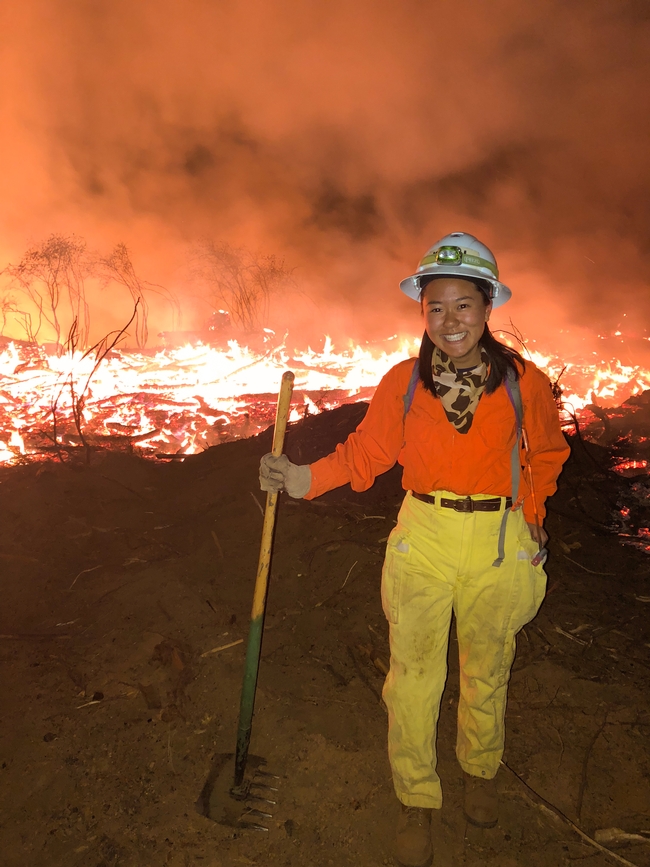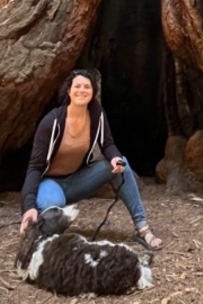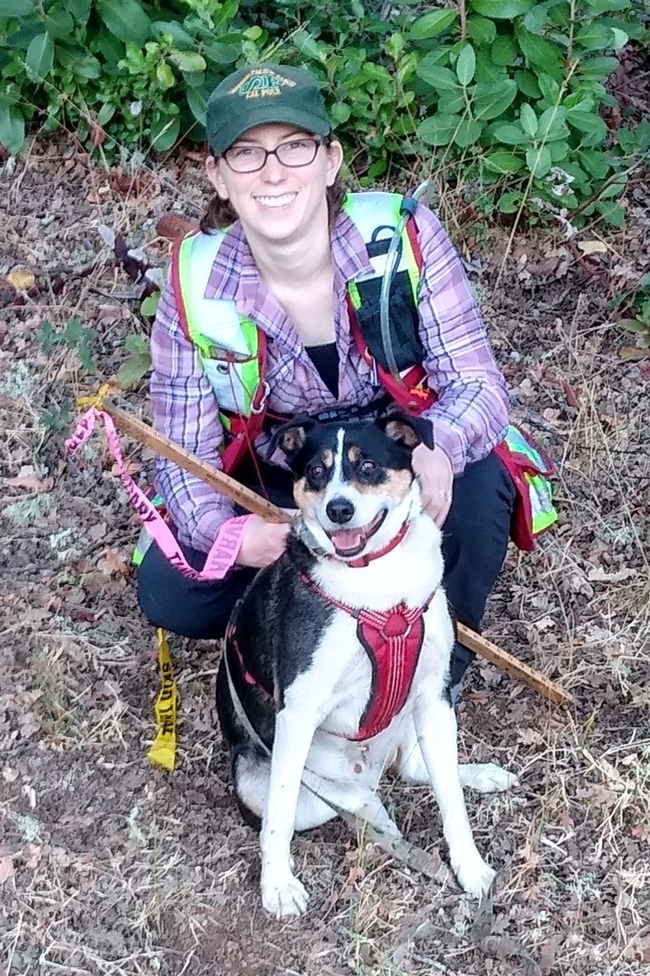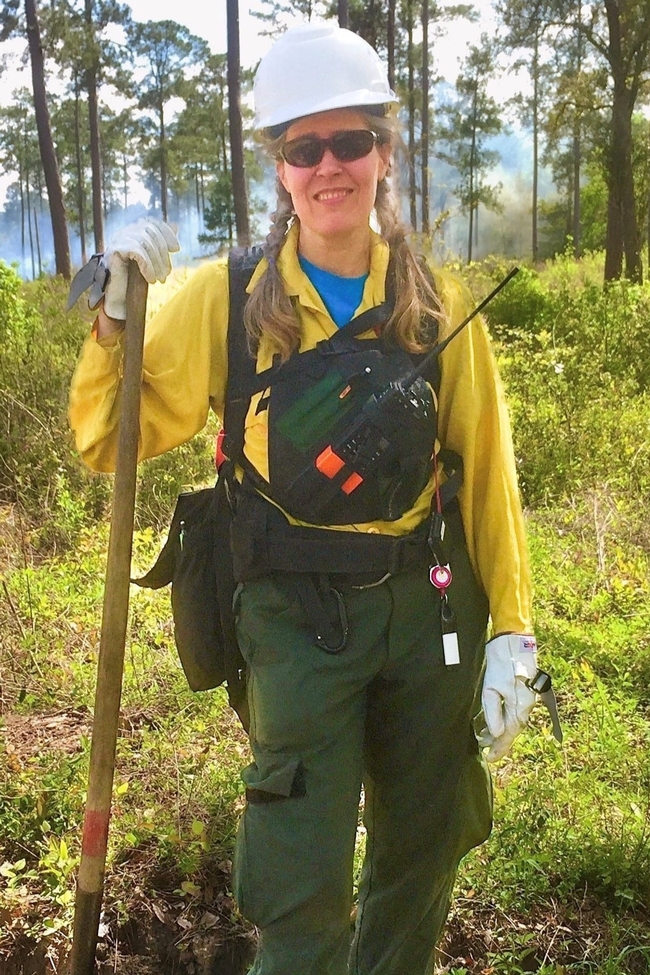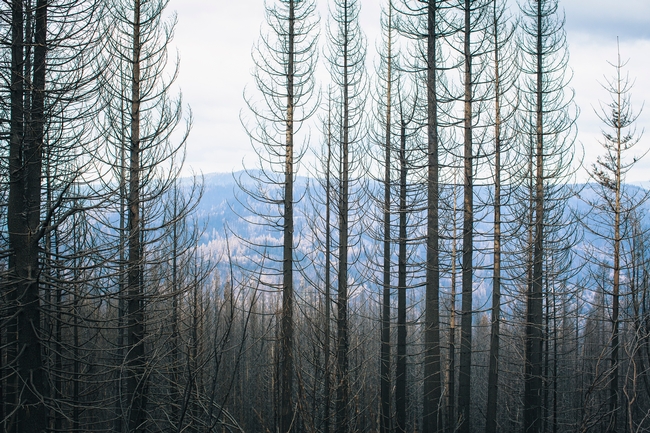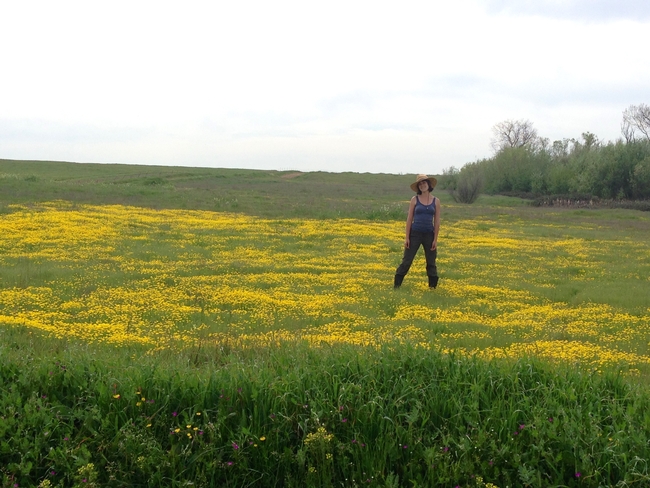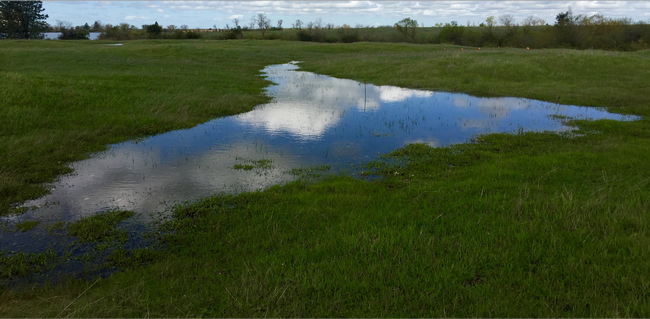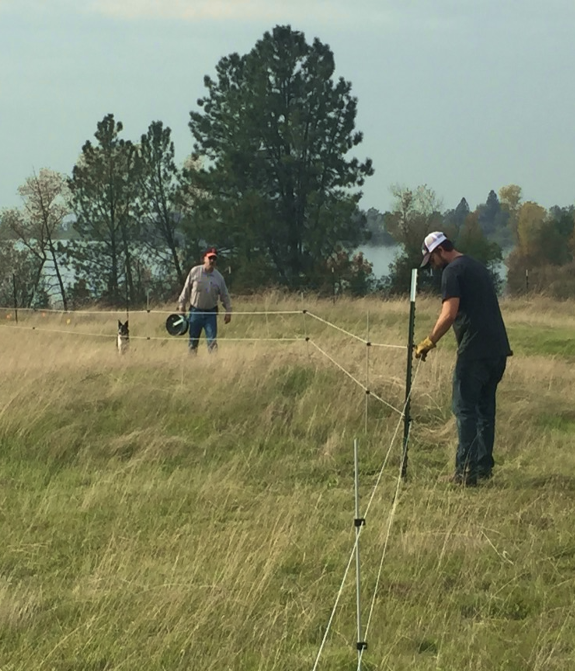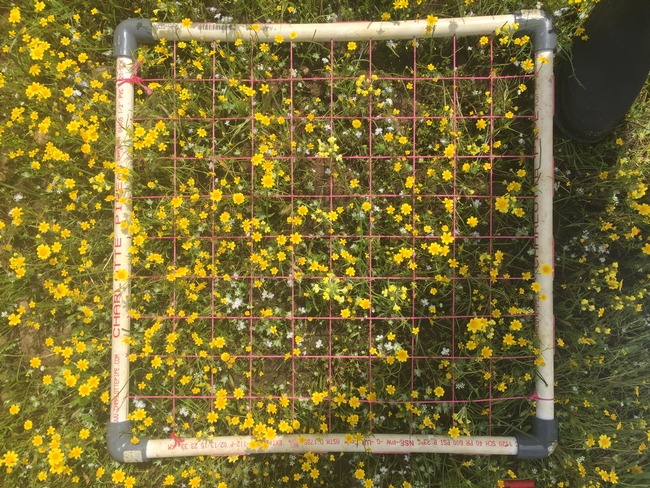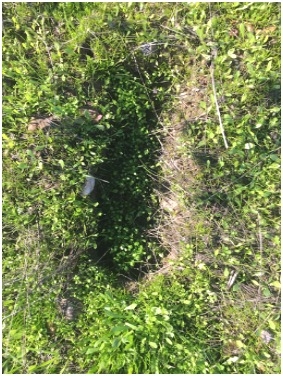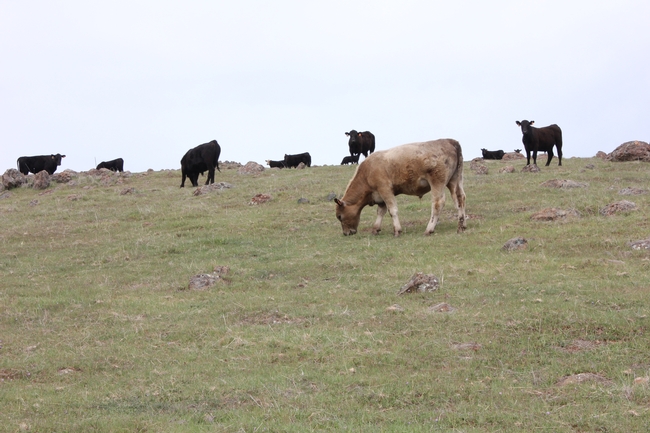Posts Tagged: Ecology
Workshops for forest landowners come to Solano, Sacramento counties, beginning July 18
Free forester site visit for landowners who complete workshop series
Forest landowners in Solano and Sacramento counties are encouraged to learn about their forests and connect with natural resource professionals in their areas during the next Forest Stewardship Workshop Series from University of California Cooperative Extension, July 18 to Sept. 12. These programs can be essential for small landowners who seek to make their forests resilient against wildfire.
Upon completing the nine-week series of virtual and in-person sessions, landowners also will be eligible for a free site visit from a local Registered Professional Forester (RPF), Certified Range Manager or California Certified Burn Boss.
Content is applicable to all forest landowners regardless of where their forest is located and will highlight talks from the local Resource Conservation District, UCCE forestry advisors, CAL FIRE, Natural Resources Conservation Service, and other natural resources community leaders. Registration fee is $60 for the workshop series, which will address common concerns among California landowners, including but not limited to:
- Forest ecology and vegetation management
- Financial planning and cost-sharing opportunities
- Oak woodland management and targeted grazing
Past participants have rated the workshop series highly, with 98% of 2022 participants rating the series overall as excellent or very good. In addition, 94% of past participants reported greater awareness of applying for and using cost-sharing programs.
A past participant has described the workshops as very accessible, saying “they (UCCE) broke things down into small pieces, [and] staff were always an email away.” In seeking to make an otherwise large amount of content approachable, UCCE hopes that landowners come away with a holistic understanding of the management process.
The workshop will take place in a hybrid setting, with classes taking place weekly online over Zoom. Participants will also engage in practical learning through a field day, where they can meet other cohort members and UCCE professionals at an outdoor field location.
At the conclusion of the workshop series, landowners will be equipped with the knowledge and network that will empower them to manage their forests in ways that meet their specific goals and objectives.
Community members in Sacramento and Solano counties interested in forest management, forest and fire ecology, and related topics are encouraged to register: https://surveys.ucanr.edu/survey.cfm?surveynumber=28675.
Forest landowners across California can learn about upcoming workshops in their areas, and also find additional resources, publications and videos: https://ucanr.edu/sites/forestry/Stewardship/.
New advisors share crucial wildfire expertise
UC ANR hires more fire advisors to address growing threat to California communities
Bringing more expertise to more places across the state, University of California Agriculture and Natural Resources continues to hire fire advisors to help communities prepare for one of the most devastating climate-fueled threats.
With wildfires a constant danger as drought grips California, five highly skilled UC Cooperative Extension experts have joined the organization since early May:
- Katie Low, statewide fire coordinator (and also serving Nevada and Placer counties)
- Alison Deak, fire advisor serving Mariposa, Fresno and Madera counties
- Tori Norville, fire advisor serving Sonoma, Napa and Marin counties
- Barb Satink Wolfson, fire advisor serving Monterey, San Benito, Santa Clara and Santa Cruz counties
- Luca Carmignani, fire advisor serving Los Angeles and Orange counties
These positions – as well as other recent additions in agriculture and natural resources fields – are made possible by California's commitment, as reflected in the state budget, to improve the lives of residents in the face of a changing climate.
This robust team of fire experts provide broad knowledge and practical advice on a wide range of topics, including fire hazard mitigation, fire ecology, prescribed fire, wildland fire research, forest and wildlife management, and climate change effects.
Although their specific areas of expertise vary, all the new fire advisors are dedicated to helping residents and community groups across California become more fire-aware, adapted and resilient. They share vital information on how Californians can prepare homes, landscapes and property for wildfire.
Katie Low
Katie Low, who began as the University of California Cooperative Extension statewide fire coordinator on Sept. 1, will fulfill two important functions for UC Agriculture and Natural Resources' team of fire experts.
First, she will coordinate and partner with UCCE fire advisors throughout California to develop and deliver wildfire-related science and outreach materials for a wide range of communities across the state. Low said encouraging diversity in the network of fire experts and engaged communities will be crucial.
“One of my goals is to help build and maintain a diverse and inclusive community of fire and natural resource professionals,” she said.
Based at the UCCE office in Auburn, Low also will collaborate with local natural resource professionals and residents in Nevada and Placer counties on projects that bolster community and ecosystem resilience to wildfire and climate change.
“I look forward to working with community groups, land managers and scientists to implement viable fire-resilient management strategies for ecosystems in the region and statewide,” Low said.
Equipped with bachelor's degrees in geography and ecosystems management and forestry, as well as a master's in forestry, all from UC Berkeley, Low brings to UC ANR a wealth of knowledge and a variety of experience.
As a fire and forest ecologist, she studied the impacts of fuels-reduction and forest-restoration treatments on Sierra Nevada mixed-conifer forests. Low also worked as operations coordinator for the California Outdoor Engagement Coalition, and as a forestry aide for California Department of Forestry and Fire Protection's Forest Biometrics Program.
Low can be reached at 530-889-7385 and katlow@ucanr.edu; follow her on Twitter @lowseverityfire.
Alison Deak
Alison Deak joined UC Cooperative Extension in August 2022 as a fire advisor for Mariposa, Fresno and Madera counties. Since she began work, Deak has been focused on conducting a needs assessment and building rapport with community leaders.
Her role as fire advisor will include promoting the use of prescribed fire to help restore fire adapted landscapes. She will also prioritize community education, applied research and partnership building efforts that are based on scientifically informed ways to help communities mitigate, prepare for, and recover from wildfire.
Originally from northeast Ohio where there are no wildfires according to Deak, it was not until she moved to Colorado for college that she learned of their impact.
When the 2012 Waldo Canyon Fire occurred, Deak felt like her playground was burning down so she acted. She began volunteering with the wildfire recovery effort and her career into fire science took off from there.
Deak earned a bachelor's in geography and environmental studies from the University of Colorado in Colorado Springs and master's degrees in geography and nonprofit management from the University of Oregon.
Before moving to California and joining UC ANR, Deak worked as a wildland firefighter with the United States Forest Service and Bureau of Land Management.
When asked what she is looking forward to most, Deak shared that she is passionate about increasing diversity in the fire science field and, particularly, empowering more women to join. She is eager to help community members prepare for wildfire and mitigate fire risk in a safe and competent manner.
Deak is located at the UC Cooperative Extension office in Mariposa County and can be reached at aldeak@ucanr.edu.
Tori Norville
Tori Norville started on Aug. 1 as the new UC Cooperative Extension fire advisor for Sonoma, Napa and Marin counties.
In this capacity, Norville will work with residents and organizations within the wildland-urban interface to encourage and cultivate fire-adapted communities. She aims to provide education and outreach on home hardening, defensible space and the importance of forest and fuel management on the landscape.
While pursuing her bachelor's degree in forestry and natural resources at Cal Poly San Luis Obispo, Norville became interested in “disturbance ecology” – how factors such as disease, insects and fire affect landscapes and environments.
“Many of the forest health problems we are seeing are stemming from a lack of disturbance, which traditionally was fire,” Norville said.
Her understanding of fire and its effects deepened during her master's degree studies in forestry science (also at Cal Poly SLO), as well as through her seven years with CAL FIRE at the Jackson Demonstration State Forest in Mendocino County. She worked as the Registered Professional Forester for its Timber Sales Program, and then the Research and Demonstration Program.
Norville's firsthand experiences from the past few fire seasons have helped shape her goals and approach. She hopes to “work holistically with disturbances” – specifically fire – on the landscape to foster healthy forests and ecosystems that are adaptable and resilient, while also researching the environmental and social aspects of fuel-reduction projects and prescribed fire.
“Hopefully, I can begin to change the perception of fire from something we need to fear, to something we respect,” she said.
Norville, based at the UCCE office in Santa Rosa in Sonoma County, can be reached at trnorville@ucanr.edu.
Barb Satink Wolfson
Barb Satink Wolfson began in her role as UC Cooperative Extension fire advisor for Monterey, San Benito, Santa Clara and Santa Cruz counties on June 30.
Her primary responsibilities include wildland fire-related research and outreach for the Central Coast region, while building trust, strong partnerships and collaborative relationships within both professional and non-professional communities.
Satink Wolfson earned her B.S. and M.S. in forestry from Northern Arizona University, and brings to UC ANR more than 20 years of fire-research and outreach experience in Arizona. Her favorite job, though, was working as a backcountry ranger in Yosemite National Park during her undergraduate years.
In her new role, Satink Wolfson hopes to address some of the questions behind the use of prescribed fire in a variety of ecosystems (such as coastal prairies and oak woodlands), and help all Central Coast communities build resilience to wildland fire so residents can live safely within fire-adapted landscapes.
Satink Wolfson, based at the UCCE office in Hollister, can be reached at bsatinkwolfson@ucanr.edu.
Luca Carmignani
Luca Carmignani joined UCCE as a fire advisor for Orange and Los Angeles counties May 2. His research interests include image analysis, computer programming and scientific outreach.
Prior to joining UC ANR, Carmignani was a postdoctoral researcher in the Berkeley Fire Research Lab at UC Berkeley. His research has focused on fire and combustion applications, from wildland fires to material flammability.
He earned his Ph.D. in engineering sciences from the joint doctoral program between UC San Diego and San Diego State University after obtaining his bachelor's and master's degrees in aerospace engineering from the University of Pisa in Italy.
Carmignani is based at South Coast Research and Extension Center in Irvine and can be reached at carmignani@ucanr.edu and (949) 237-2956. Follow him on Twitter @l_carmignani.
Just what is a ‘resilient’ forest, anyway?
Study finds resilient, frequent-fire forests have far fewer trees
What does a “resilient” forest look like in California's Sierra Nevada? A lot fewer trees than we're used to, according to a study of frequent-fire forests from the University of California, Davis.
More than a century ago, Sierra Nevada forests faced almost no competition from neighboring trees for resources. The tree densities of the late 1800s would astonish most Californians today. Because of fire suppression, trees in current forests live alongside six to seven times as many trees as their ancestors did — competing for less water amid drier and hotter conditions.
The study, published in the journal Forest Ecology and Management, suggests that low-density stands that largely eliminate tree competition are key to creating forests resilient to the multiple stressors of severe wildfire, drought, bark beetles and climate change.
This approach would be a significant departure from current management strategies, which use competition among trees to direct forest development.
Defining ‘resilience'
But first, the study asks: Just what does “resilience” even mean? Increasingly appearing in management plans, the term has been vague and difficult to quantify. The authors developed this working definition: “Resilience is a measure of the forest's adaptability to a range of stresses and reflects the functional integrity of the ecosystem.”
They also found that a common forestry tool — the Stand Density Index, or SDI — is effective for assessing a forest's resilience.
“Resilient forests respond to a range of stressors, not just one,” said lead author Malcolm North, an affiliate professor of forest ecology with the UC Davis Department of Plant Sciences and a research ecologist with the U.S. Forest Service, Pacific Southwest Research Station. “‘Resistance' is about surviving a particular stress, like fire — but there's a lot more going on in these forests, particularly with the strain of climate change.”
Competitive nature
For fire-adapted forests in the Sierra, managing for resilience requires drastically reducing densities — as much as 80% of trees, in some cases.
“Treatments for restoring resilience in today's forests will need to be much more intensive then the current focus on fuels reduction,” said Scott Stephens of UC Berkeley, a co-author on the paper.
The study compared large-scale historical and contemporary datasets and forest conditions in the southern and central Sierra Nevada, from Sequoia National Forest to the Stanislaus National Forest. It found that between 1911 and 2011, tree densities increased six- to seven-fold while average tree size was reduced by half.
A century ago, both stand densities and competition were low. More than three-quarters of forest stands had low or no competition to slow a tree's growth and reduce its vigor. In contrast, nearly all — 82%-95% — of modern frequent-fire forests are considered in “full competition.”
The study indicates that forests with very low tree densities can be more resilient to compounded threats of fire, drought and other climate stressors while maintaining healthy water quality, wildlife habitat and other natural benefits. Forests burned by high-severity fires or killed by drought lose such ecosystem services.
Wake-up call
The authors say the 2012-2016 drought, in which nearly 150 million trees died from drought-induced bark beetle infestations, served as a wake-up call to the forestry community that different approaches are required to help forests confront multiple threats, not only severe wildfires.
A shift away from managing for competitive forests and toward eliminating competition could allow the few to thrive and be more resilient.
“People have grown accustomed to the high-density forest we live in,” North said. “Most people would be surprised to see what these forests once looked like when frequent surface fires kept them at very low densities. But taking out smaller trees and leaving trees able to get through fire and drought leaves a pretty impressive forest. It does mean creating very open conditions with little inter-tree competition. But there's a lot of historical data that supports this.”
“We think resilient forests can be created, but it requires drastically reducing tree density until there's little to no competition,” said Brandon Collins of UC Berkeley, another co-author on the paper. “Doing this will allow these forests to adapt to future climate.”
Additional co-authors include Ryan Tompkins of UC Cooperative Extension, and Alexis Bernal and Robert York of UC Berkeley.
The study was funded by the National Park Service Pacific West Region, U.S. Forest Service Pacific Southwest Research Station, U.S. Joint Fire Sciences Program, and the UC Agriculture and Natural Resources Division.
Once perceived as a problem, conservation grazing by cattle a boon to vernal pools
Giving 1,200-pound cows access to one of California's most fragile and biologically rich ecosystems seems a strange way to protect its threatened and endangered species.
But a recently published study suggests that reintroducing low to moderate levels of cattle grazing around vernal pools – under certain conditions – leads to a greater number and greater variety of native plants.
Ecologists consider vernal pools – ephemeral ponds that form seasonally – “islands of native habitat” amid California's grasslands that are dominated by exotic grasses. These biodiversity hotspots harbor about 200 native species of animals and plants, such as the coyote thistle, which germinates under water and forms a snorkel-like straw to deliver oxygen to its roots – and then “fills in” its stem as the pool dries.
Specially adapted to survive in those stages of wet and dry, many of these species are found only in vernal pools scattered across California – making those pools an urgent priority for conservationists.
During the 1970s and 1980s, vernal pools were fenced off in parts of the state, in the hopes of protecting the flora and fauna from grazing cattle. In the early 2000s, however, UC Davis researcher Jaymee Marty found that grazing was actually crucial to vernal pool biodiversity: once livestock were removed from areas that had been grazed historically, the diversity of plants plummeted.
“Her research was critical to rethinking the best ways to protect the diversity in California's vernal pool ecosystems,” Eviner said.
The Michaels-led study, published in the Journal of Applied Biology, builds on Marty's work, by looking at scenarios where cattle had been blocked from vernal pools for decades, and then observes the rate at which biodiversity returns after reintroduction of the animals. Michaels said she wanted to provide some initial answers to the practical questions that ranchers and land managers have in potentially reintroducing cattle.
“A lot of them had these areas that had been fenced off from grazing for the last 20–30 years, and they were very concerned about what happens if we let cattle back onto these vernal pool grasslands – are there going to be negative impacts because that land had been at rest for a few decades?” Michaels explained.
They discovered that, after reintroducing cattle to areas that had been fenced off since the 1970s, there was a greater abundance of native flora (species like the vernal pool buttercup, bractless hedge-hyssop and bristled downingia), as well as increased diversity among the plants (both in number of species and in how evenly distributed they were).
“Encouragingly, diversity is rapidly restored,” Eviner said, “providing conservationists with strong data to show that rapid action can enhance plant diversity.”
And as for potential worries about cattle making a snack of vernal pool plants, Michaels and her colleagues observed that the cattle appear to be more interested in munching on grasses.
“Anecdotally, we saw very few signs of herbivory on the vernal pool species because the timing is such that [the plants] are underwater for a good part of the late winter and early spring, and then by the time they're blooming, there's plenty of good forage around for the cattle,” Michaels said.
In fact, the cattle seem to be performing a function filled for millennia by native grazers (namely, the once-abundant tule elk), helping to knock down vernal pool species' chief competitor in those transition zones: the grasses.
Instead, microdepressions created by the cattle appeared to encourage the proliferation of native plants. Each hoofprint became a miniature basin – “a vernal pool within a vernal pool.”
“Right in those transition zones, where they could be hosting either the vernal pool species or the upland grasses, just a couple centimeters of soil topography can make a big difference,” Michaels explained. “If a cow comes and steps in that transition zone, and that lowers the soil surface so it stays inundated a little longer, you end up seeing these pockets of vernal pool species that are able to persist.”
Michaels is currently conducting a follow-up study on the hoofprints to pinpoint their role in boosting native plant abundance and biodiversity. Because the prints can last for several years, they might be able to deliver some enduring benefits – and land managers might not have to bring cattle in to graze the pools as often.
“If it's really the hoofprints making the big difference, maybe we don't need to graze every year – only during certain times of year when we know the hoofprints will form well and harden, and then we're good for a few years,” Michaels said.
Low residual dry matter on rangeland a concern heading into wet season
With some recent forecasts bringing encouraging news about a potential El Niño, some ranchers have been asking about what they should expect in terms of forage production, if and when the rains come. What they want to know is how soon rangeland productivity will reach the pre-drought levels again. One issue that I always draw their attention to is the levels of residual dry matter (RDM) on the rangelands. Even with the reduction in herd sizes and shorter grazing seasons employed by most producers, more rangelands now have less than recommended RDM levels.
RDM is a measure of the old plant material (without counting summer annuals) that are left standing or on the ground before the fall precipitation comes. It is a great indicator of both forage production and grazing intensity. These leftover plant materials are critical on California rangelands to reduce erosion and nutrient loss, and to create a conducive environment for diverse plant communities to thrive. Optimum RDM levels are site specific, they range from 100-2,100 pounds per acre, and depend on precipitation zone, slope and tree canopy cover. Ideal RDM levels increases with precipitation and slope, and decreases with tree cover. Studies show that too low or too high RDM levels will reduce species composition and forage production, both factors critical to any livestock production system. The good news is that annual rangelands are resilient and will likely return to normal production within two years after bringing RDM level to recommended standards.
Knowing the RDM standards for one's rangeland and continuously monitoring is an important step towards achieving sustainable rangeland management and livestock production.
Details about RDM standards, data collection methods and more can be found in the free UC Agriculture and Natural Resources publication Guidelines for Residual Dry Matter on Coastal and Foothill Rangelands in California.
Author: Fadzayi Mashiri, Ph.D.

